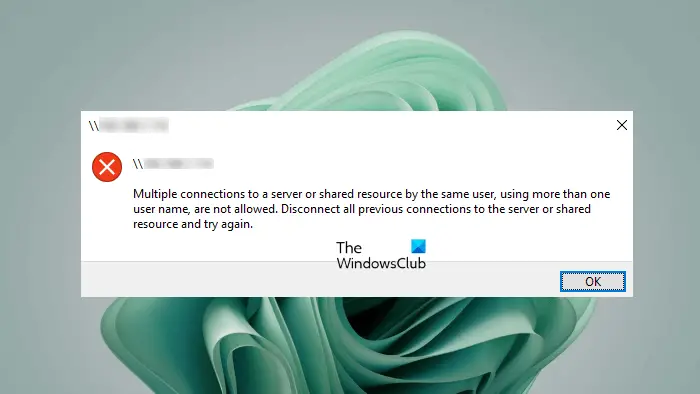The complete error message is:
Multiple connections to a server or shared resource by the same user
The following solutions will help you fix the “Multiple connections to a server or shared resource by the same user” error while mapping a drive on your network. Let’s see all these fixes in detail.
1] Restart Windows Explorer
The first thing that you should try is to restart Windows Explorer. If a computer freezes or any other problem occurs on a computer, restarting Windows Explorer fixes the problem. The following steps will help you regarding this:
Open the Task Manager.Go to the Processes tab.Scroll down and locate Windows Explorer.Once you find it, right-click on it and select Restart.
In addition to this, we also suggest you restart the client computer. If this does not fix the issue, move ahead and use the other solutions provided below.
2] Restart the Workstation Service
A Workstation Service is a service on the Microsoft Windows Server operating system that allows the client computer to request files and other resources from the servers. Restart the Workstation Service on your client computer and see if it helps. To do so, launch the Command Prompt as an administrator and execute the following commands one by one. Copy the following commands one by one and paste them into the Command Prompt (Admin) and hit Enter after entering each command. Now, check if the error occurs. If the above command does not work, use the following command to force restart the Workstation Service.
3] Make sure that the shared folder is not opened
If the shared folder that you are accessing is opened in another window, you may get this error message. Check this. If the folder is opened, close it and try again.
4] Delete the credentials of your Network Share via the Credentials Manager
One effective solution to fix this problem is to clear the credentials for your network share. For this, you have to open the Credentials Manager. Go through the following instructions:
Open the Control Panel.Switch the View by mode to Large icons.Click on the Credentials Manager.Look for the credentials for your network share under the Windows Credentials section and delete them.
After deleting the credentials, you should be able to map your network drive.
5] Create a different DNS for the remote server
According to Microsoft, this behavior is by design. Hence, if the error still persists, you have to map the drive in a way so that Windows will think as if it is connecting to a different server. To do so, you can use any of the following two workarounds:
Use the IP address of the remote server when you try to connect to the network share.Create a different DNS (Domain Name System) Alias for the remote server. Now, use this DNS Alias to connect to the network share.
The above two workarounds should work and the issue should get fixed.
6] Delete the drive(s) you are experiencing issues with
If the problem still persists, delete the drive(s) you are experiencing the issues with. Open the Command Prompt as an administrator and type the following command. After that, hit Enter. Now, look for the drive(s) you are experiencing the problem with. Now, type the following command and press Enter. In the above command, the servername\foldername is the drive that you want to delete.
How can I connect to the shared folder using different user accounts?
To access the shared folder with the different user account(s), select the Connect using different credentials option while selecting the targeted folder during the network drive mapping. Do not select the Remember my credentials checkbox if you want to access the shared folder with a different user account the next time.
How do I share files between users on the same computer?
You can share or transfer files between different users on the same computer by using the copy-and-paste method. If you are using an administrator account, you can easily copy the files from one user account and paste them into the other user account. Another method includes the use of the Public folder. Read next: Network Error: Unable to access Network drive, Error 0x80004005.

